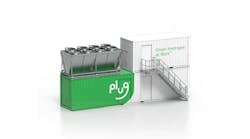By Elisa Wood
February 23, 2011
Before energy became a hot topic, no one cared about the electric meter. It was the box on the house we all ignored except the guy from the utility who dodged the barking dogs to take a reading from it once in awhile.
It is a sign of our times that this box now inspires enough emotion for people to take to the streets. Protesters gathered outside the California Public Utilities Commission last week claiming that new metering technology not only makes people sick, but also violates their Constitutional rights. http://stopsmartmeters.wordpress.com/2011/02/18/feb-16th-protest-at-the-ca-public-utilities-commission/ Such opposition has been going on in California for months and has spread to other states.
On the other end of the spectrum, new or ‘smart’ meters are hailed as the addiction counselors that will save us from our dependence on foreign energy. Thus, utilities are rapidly replacing our ignored ‘dumb’ meters with the new smart version. North America and Europe will replace 45% their meters with smart ones by 2015, according to Pike Research. http://www.pikeresearch.com/research/smart-meters
So it is not a surprise to see that the Electric Power Research Institute weighed in recently with a study on the safety of smart meters. The study concluded that the radio-frequency (RF) exposure levels from the meters – at least the type examined by EPRI –are too low to be any danger to human health. In fact, the study found smart meter emissions, even at the maximum point, are about equal to emissions from WiFi routers and radio and television transmission. They are far lower than exposure fields from cell phones or microwave ovens, according to EPRI. www.epri.com
Known as advanced metering infrastructure (AMI), the new wireless meter uses digital technology to allow for two way communication between the household and the utility. Used optimally, the smart meter provides price signals from the utility so that consumers can choose when to do laundry, cook dinner or undertake other energy-consuming activities. The idea is to discourage use of the electric grid when it is under strain. This allows us to cut back on the number of peaking power plants we must build. These plants, which use fossil fuels, emit harmful pollutants.
So whichever side you take, whether you think of smart meters as hero or villain, there are health issues to consider. Smart meters increase RF exposure; lack of smart meters over the long term increases emissions from power generation.
No doubt we will hear much more about this issue. Indeed, EPRI sees its study as just the first step in responding to public concern.
But one thing is for certain, the meter is no longer the ignored box on the house. Like much in energy, its significance is rising in US policy, economic and health debate. Energy is front and center in the public psyche. That’s a good thing, since smart boxes will only get us so far in energy planning; smart consumers are the key.
This blog is open source & copyright free with attribution to www.RealEnergyWriters.com. Visit Elisa Wood at www.realenergywriters.com and pick up her free weekly newsletter and podcast.






